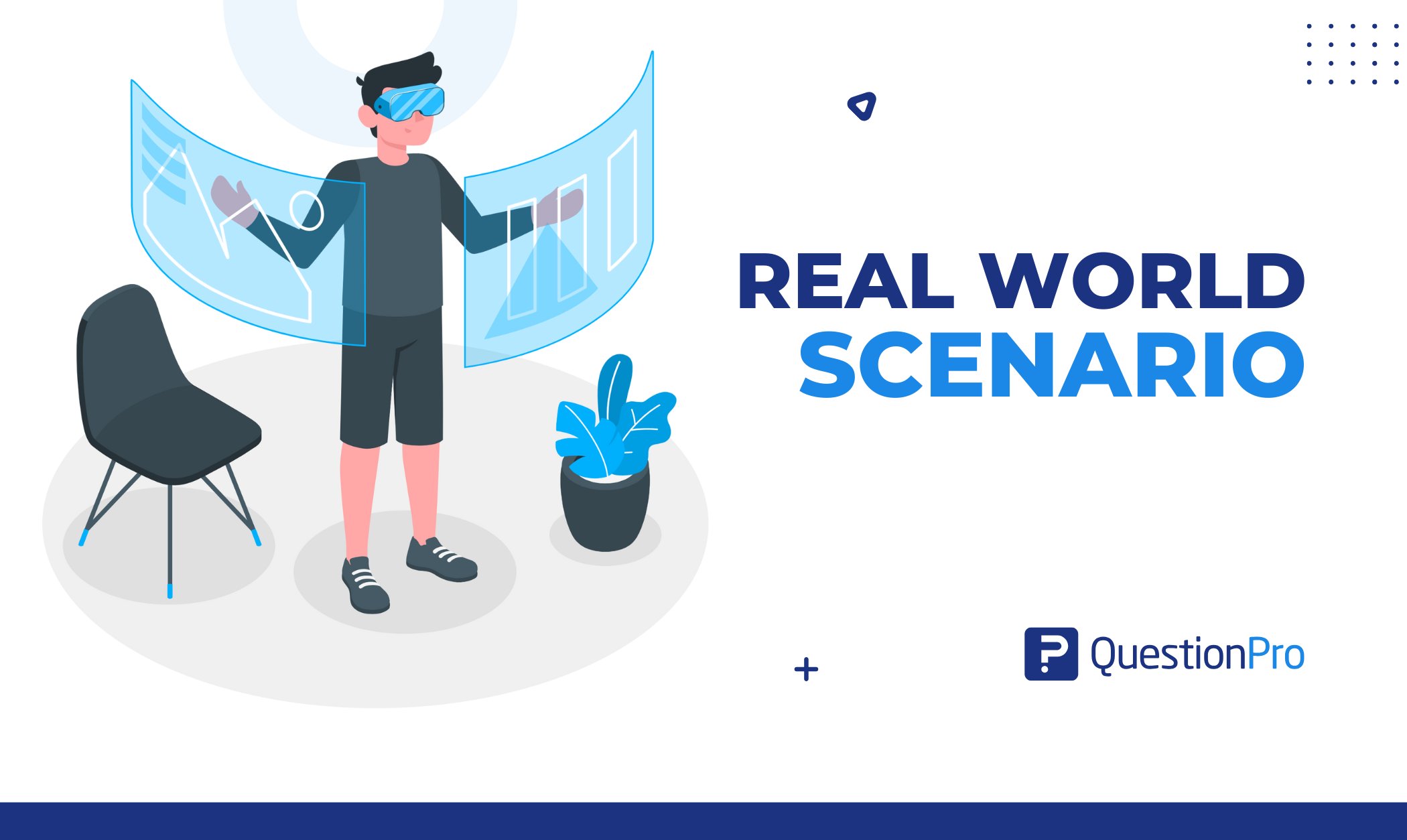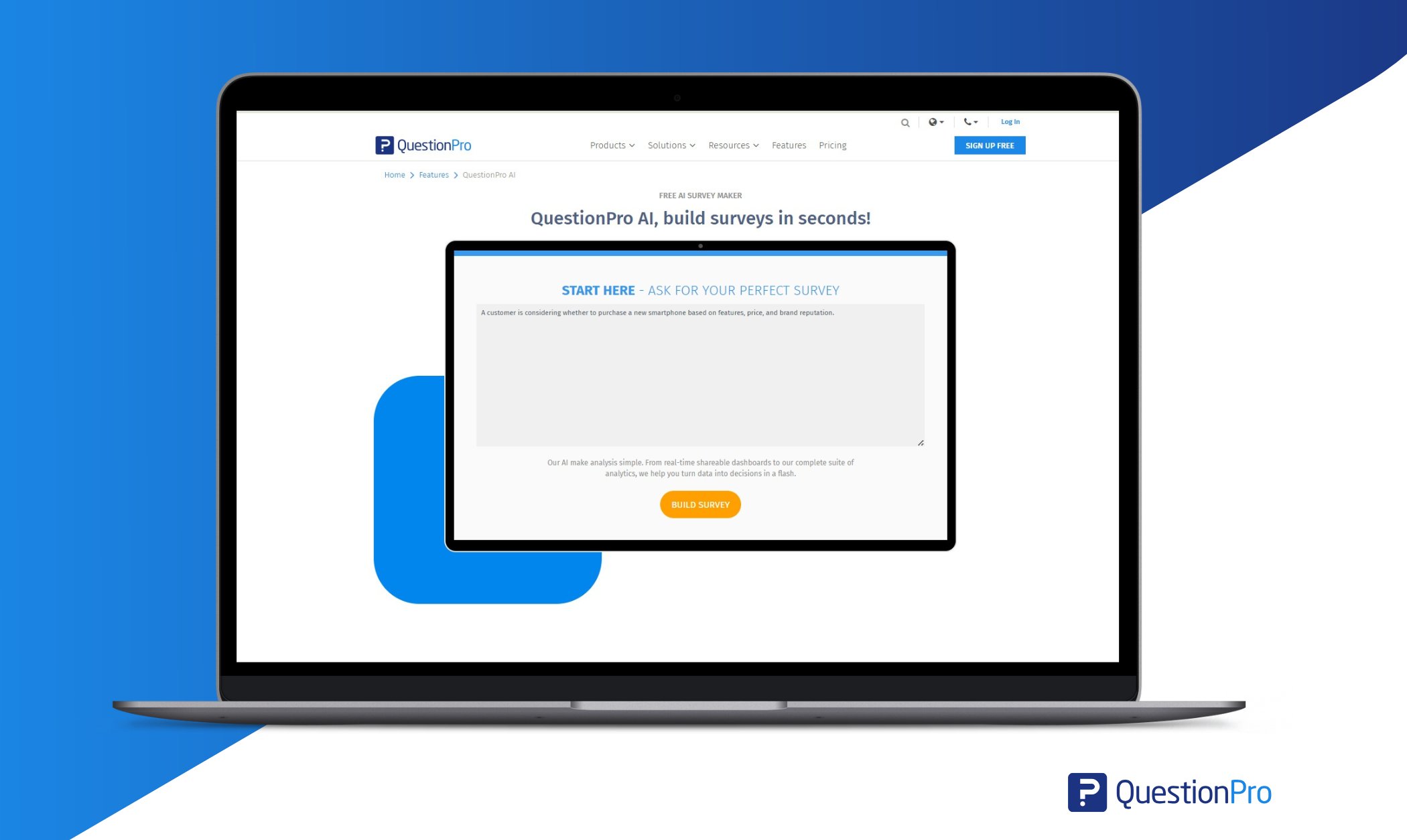
When you ask someone, “Would you buy this product?” you’ll often get a polite answer, but not always the truth. Now, ask them, “Imagine you’re at the store, it’s raining, and you forgot your umbrella, would you pick this product over your usual brand?” and you’ll likely get a response that’s more real and thoughtful. That’s the difference a real-world scenario makes in survey research.
By putting people in relatable situations, you get insights that go beyond opinions, insights that reflect real decisions and actions. Whether you’re testing a product, understanding customer journeys, or evaluating training programs, using real-life scenarios in your surveys leads to better feedback and smarter learning outcomes.
In this blog, we’ll explore how real-world scenarios can make your surveys more engaging, uncover honest responses, and lead to insights you can actually use.
The Role of Real-World Scenarios in Survey Design
When you include a real-world scenario, you’re giving people context.
Instead of asking, “Would you recommend this product?” you might say, “If a friend asked for a quick product suggestion while shopping, would you recommend this?” Suddenly, the answer feels more genuine and useful.
Real-world scenarios help surveys by:
- Making questions relatable and easier to answer: People connect better with questions when they can picture themselves in the situation.
- Getting responses closer to real behavior: You move beyond surface-level answers and capture how they might actually react.
- Improving the quality of insights: Scenarios reveal more honest thoughts, which makes your data more reliable.
Whether you’re researching customer choices, product feedback, or service experiences, adding real-world situations into your survey design makes a big difference. It turns simple questions into meaningful conversations and gives you insights that truly reflect real life.
How to Create a Survey with an Effective Real-World Scenario
If you want your survey to collect insights that truly reflect real behavior, simply asking generic questions isn’t enough. You need to design the entire survey around situations your respondents actually face. Using real-world scenarios as the backbone of your survey can make your questions feel relevant, realistic, and easier for respondents to answer honestly.
Here’s how you can create a meaningful survey with a real-world scenario:
1. Start with a Real-Life Situation Your Audience Can Relate To
Begin by identifying a common situation your target audience often experiences. This scenario will set the stage for your survey. Instead of randomly adding questions, think of a storyline that flows naturally, just like how they would encounter the situation in daily life.
- Are they shopping online and making purchase decisions?
- Are they choosing a lunch spot during a busy workday?
- Are they deciding whether to use a new service at work?
- Once you have the scenario, you can build your questions around it.
2. Write Questions That Flow from the Real-World Scenario
Your scenario shouldn’t stand alone; it should guide the questions you ask. Make sure each question feels like a natural follow-up to the situation you’ve described. This helps respondents stay engaged and answer as if they were actually in that moment.
Example:
- Scenario:
“You’re shopping online for a new phone and see a special offer on a lesser-known brand.”
- Question:
“Would you consider buying this brand instead of your usual choice because of the discount?”
The scenario gives context; the question invites an honest response.
3. Keep the Scenario Clear and Simple in the Survey Flow
Your scenario should feel like a short introduction or lead-in before the questions. Don’t overload it with unnecessary details; just enough information to set the context. This makes your survey easy to follow and ensures respondents aren’t confused before they even reach the questions.
- Good surveys balance information with simplicity
- Stick to key facts relevant to your topic.
- Avoid long descriptions that may overwhelm respondents.
- Make sure the scenario supports the question, not distracts from it.
4. Use the Real-World Scenario Throughout the Survey, Not Just Once
A well-crafted survey may reference the scenario in multiple questions to maintain context and ensure consistency. This approach keeps respondents in the same mindset as they move through the survey and helps collect more consistent, meaningful responses.
For example, if your survey is about shopping behavior, you might start with the scenario and then ask questions about preferences, habits, and spending decisions, all tied back to that initial context.
5. Avoid Bias in Your Real-World Scenario
The goal is to present the situation in a fair, balanced way so respondents can answer honestly based on their real thoughts.
Here’s how you can avoid bias in your survey scenarios:
- Stay neutral with your wording: Avoid emotionally charged or leading phrases that push respondents in a certain direction.
- Present facts, not opinions: Describe the situation without adding your personal views or assumptions.
- Let respondents draw their own conclusions: Set up the scenario and ask the question without hinting at the “right” answer.
- Avoid highlighting benefits or drawbacks: Unless you’re specifically testing reactions to these factors, keep the scenario balanced.
By following these simple rules, you’ll create scenarios that feel fair and unbiased, helping you collect responses that reflect genuine opinions and real-world behavior.
How QuestionPro AI Helps You Create Scenario-Based Surveys Effortlessly?
Building surveys that truly reflect real-life situations can be a challenge, especially when you want your questions to feel natural and relevant to your audience. QuestionPro AI makes it easy to create scenario-based surveys in seconds with its powerful, conversational interface. It helps you move from idea to actionable questions with minimal effort.

Quickly Generate Survey Questions from Real-World Scenarios
With QuestionPro AI, all you need to do is describe the scenario or situation you want to explore. The AI then analyzes your input and generates thoughtful survey questions that match the context. Whether your scenario is broad or highly specific, the tool provides relevant questions that encourage honest responses, saving you time and helping you capture better insights.
For example, you might input a scenario like:
“A customer is considering whether to purchase a new smartphone based on features, price, and brand reputation.”
In seconds, QuestionPro AI can generate a set of questions around that scenario, covering buying preferences, decision-making factors, brand loyalty, and price sensitivity, all ready for you to use, edit, or refine.
Offers a Variety of Question Types
QuestionPro AI isn’t limited to one style of question. It can suggest:
- Multiple choice questions
- Rating scales
- Open-ended responses
- Demographic questions
This means you can gather a mix of qualitative and quantitative data, giving you a fuller picture of how people might behave in real situations.
Speeds Up Survey Creation
One of the standout features of QuestionPro AI is how fast it works. You don’t have to spend hours writing, rewriting, or brainstorming questions. The AI does the heavy lifting for you, delivering a ready-to-use set of questions that you can tweak or deploy right away. Whether you need a quick study or a detailed research project, this tool helps you work smarter, not harder.
Makes Real-World Scenario-Based Research Easy for Everyone
You don’t have to be a research expert to create great surveys with QuestionPro AI. Its intuitive design works for both beginners and experienced professionals. You can start with a simple scenario description and end up with a well-structured survey, complete with logic, branching, and language options, all within the same platform.
Helps You Reach the Right Audience
QuestionPro AI also supports multilingual surveys and can help you customize your questions to different demographics. Whether you’re targeting global audiences or specific groups, the tool adapts to your research needs and helps you collect meaningful responses.
Example: Lunch Habits Survey
To see how it works, imagine you want to create a survey about employee lunch habits. You can start by entering a scenario like:
“Office workers deciding where and what to eat for lunch during a busy workweek.”
QuestionPro AI might generate questions such as:
- How many days per week do you work in the office?
- How often do you eat lunch at your desk?
- What factors influence your lunch decisions?
- Do you prefer bringing lunch from home or buying it nearby?
- How often do you try new lunch spots?
Within seconds, you have a complete set of questions ready for review, and additionally, the option to edit, reorder, or add logic as needed.
Why Use QuestionPro AI for Scenario-Based Surveys?
QuestionPro AI makes this easier by giving you a fast, reliable way to turn ideas into effective survey questions. Here’s why it’s a great tool for scenario-based research:
- Saves Time and Costs: Quickly generate surveys without relying on external help.
- Supports DIY Research: Perfect for anyone who wants to create meaningful surveys, even without deep research knowledge.
- Flexible for Any Topic or Industry: No matter the subject, QuestionPro AI helps you create relevant surveys that suit your needs.
- Easy to Customize: Add logic, change language, and fine-tune your questions directly within the platform.
- Powered by Constant Learning: The AI adapts to your style over time, making your experience even smoother.
Conclusion
A real-world scenario is a powerful way to capture real, honest insights by placing respondents in lifelike situations. They help move beyond generic answers and encourage thoughtful responses that reflect actual behavior. From crafting relatable scenarios and asking the right mix of questions to ensuring your survey is unbiased and well-structured, every step plays a role in making your research more meaningful.
With the right tools, you can easily generate questions, customize them to fit your study, and share your survey with the right audience. Scenario-based research not only saves time and effort but also helps you make better decisions based on real-world insights.
With QuestionPro AI, creating effective scenario-based surveys is as simple as describing your idea. The AI will do the rest, generating thoughtful questions, helping you edit and refine them, and giving you tools to share your survey with the right audience. Whether you’re new to research or an experienced professional, QuestionPro AI helps you get meaningful insights faster and easier than ever before.
Frequently Asked Questions (FAQs)
Answer: Using a real-world scenario makes questions more relatable, encouraging honest and thoughtful responses that reflect real behavior instead of hypothetical answers.
Answer: To create an effective real-world scenario, keep it simple, realistic, and relevant to your audience’s experiences. Make sure it reflects situations they can relate to.
Answer: Yes, a well-crafted real-world scenario presented in a neutral way can reduce bias by prompting genuine responses and avoiding leading questions.
Answer: By reflecting actual behavior, real-world scenarios provide more actionable insights, helping businesses or researchers make decisions based on realistic expectations.
Answer: They work well for both, helping in qualitative surveys to explore thoughts in depth and in quantitative surveys to measure behavior patterns more accurately.







